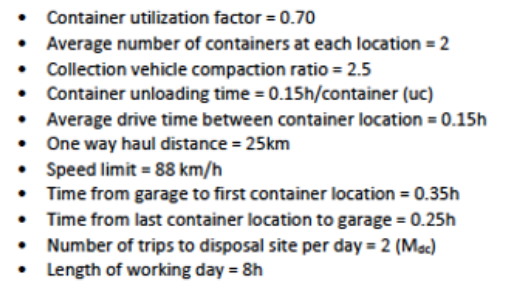Isabelle Cumberbatch
Student
- Dec 1, 2020
- 4
Can You help me!!
SW from commercial area are to be collected using a stationary-container system having 5 m3 containers. Determine an appropriate truck capacity for following conditions:

SW from commercial area are to be collected using a stationary-container system having 5 m3 containers. Determine an appropriate truck capacity for following conditions:

